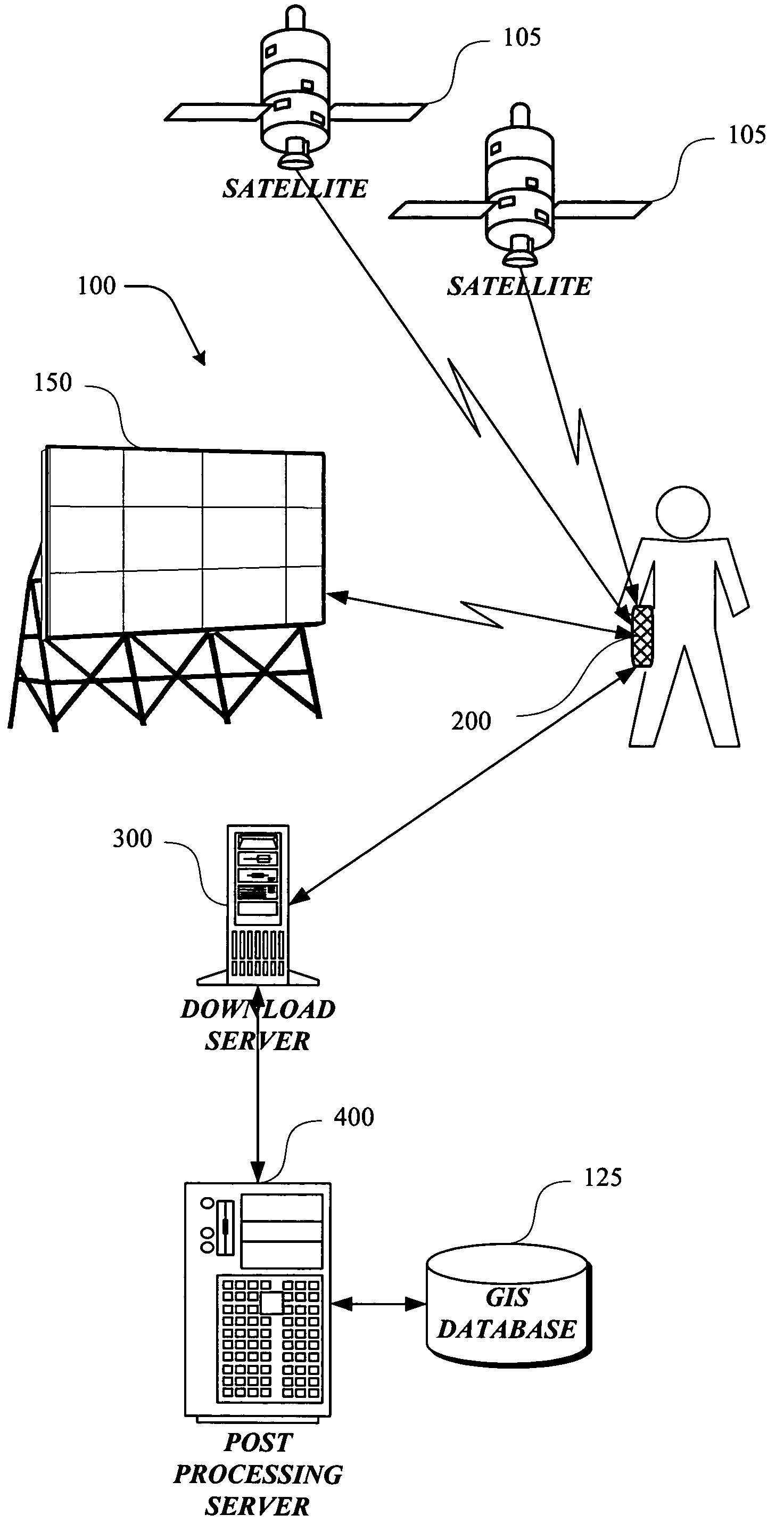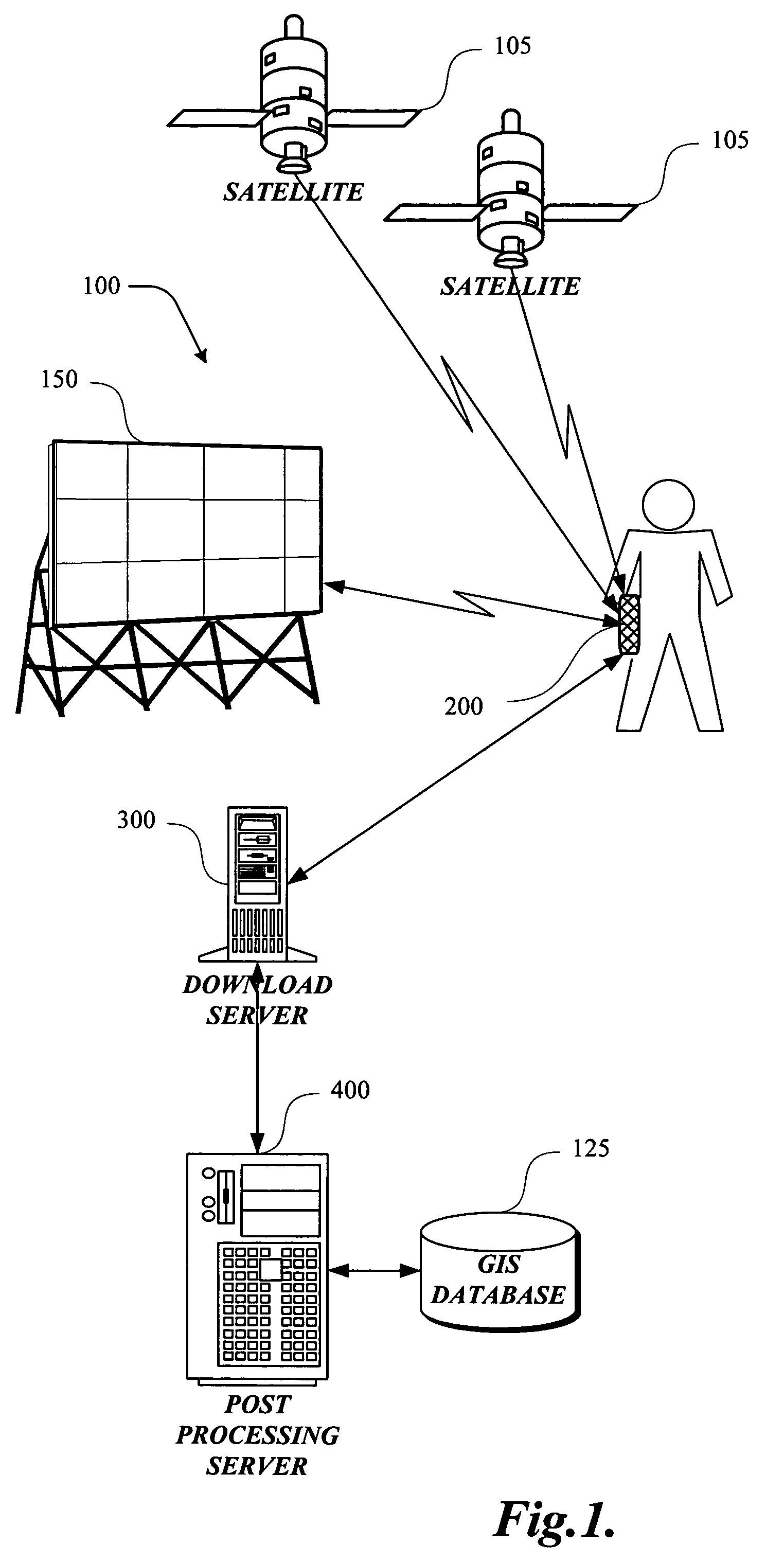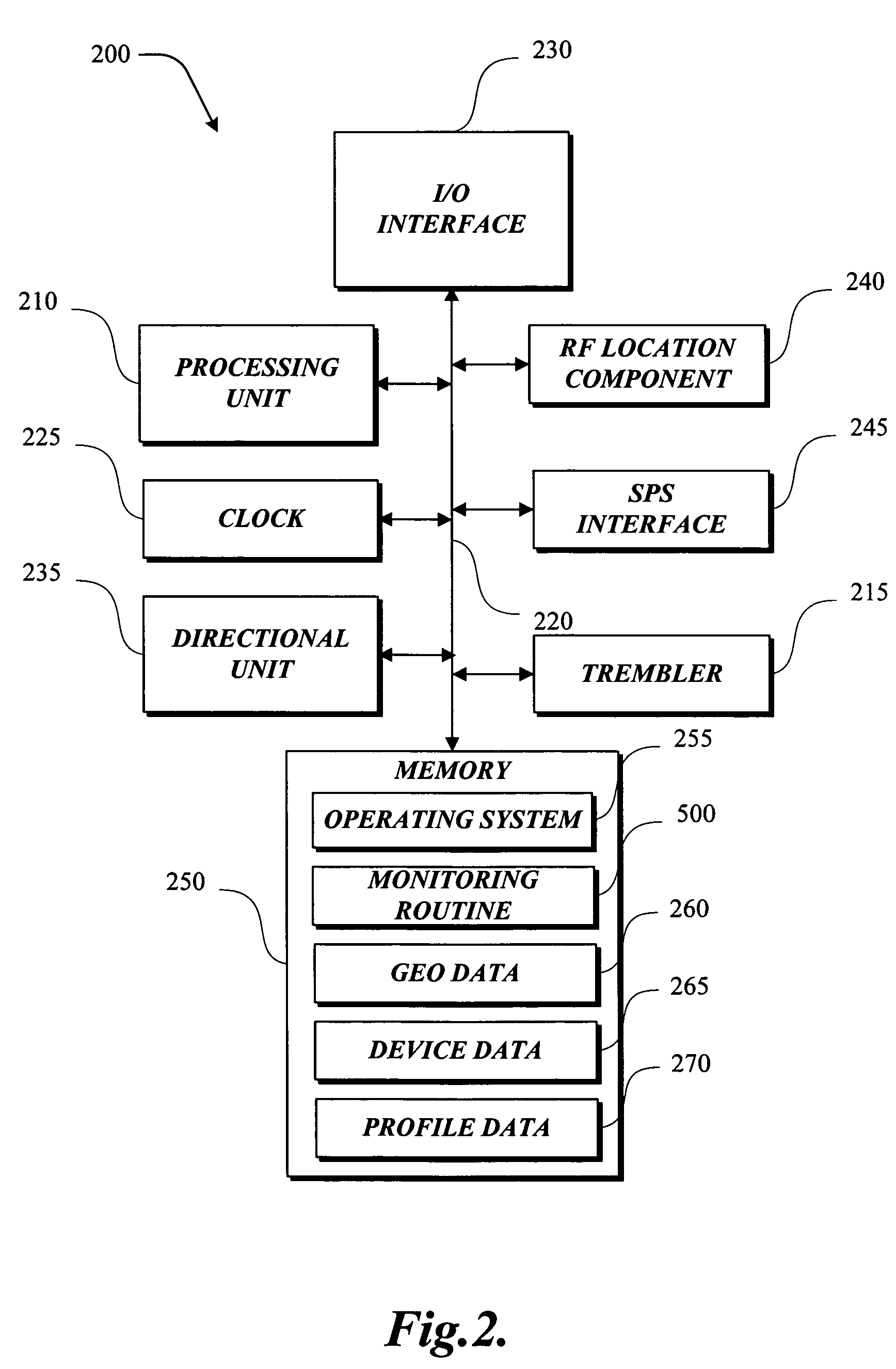Satellite positioning system enabled media measurement system and method
a satellite positioning system and media measurement technology, applied in the field of assessing the effectiveness of media displays, can solve the problems of lack of consensus and acceptance of a system and/or method of assessing, research industry that could provide exposure, frequency, reach estimates, etc., and public viewable media display providers have not kept pace with these developments
- Summary
- Abstract
- Description
- Claims
- Application Information
AI Technical Summary
Benefits of technology
Problems solved by technology
Method used
Image
Examples
Embodiment Construction
[0053]The detailed description which follows is in terms of processes and symbolic representations of operations by conventional computing components, including processors, memory storage devices for the processor, connected input and output devices. These described processes and operations may utilize conventional computing components as well as more specialized components in a heterogeneous distributed computing environment, including remote file servers, computer servers, and memory storage devices. Each of these conventional distributed computing components may be accessible by a processor via a communication network.
[0054]FIG. 1 is a functional block diagram of a system 100 for determining the reach and frequency of a respondent's exposure to publicly viewable media displays. While the system 100 generally operates in a computing environment comprising individual computer systems, some of which may be interconnected over a network (such as the Internet, publicly switched teleph...
PUM
 Login to View More
Login to View More Abstract
Description
Claims
Application Information
 Login to View More
Login to View More - R&D
- Intellectual Property
- Life Sciences
- Materials
- Tech Scout
- Unparalleled Data Quality
- Higher Quality Content
- 60% Fewer Hallucinations
Browse by: Latest US Patents, China's latest patents, Technical Efficacy Thesaurus, Application Domain, Technology Topic, Popular Technical Reports.
© 2025 PatSnap. All rights reserved.Legal|Privacy policy|Modern Slavery Act Transparency Statement|Sitemap|About US| Contact US: help@patsnap.com



